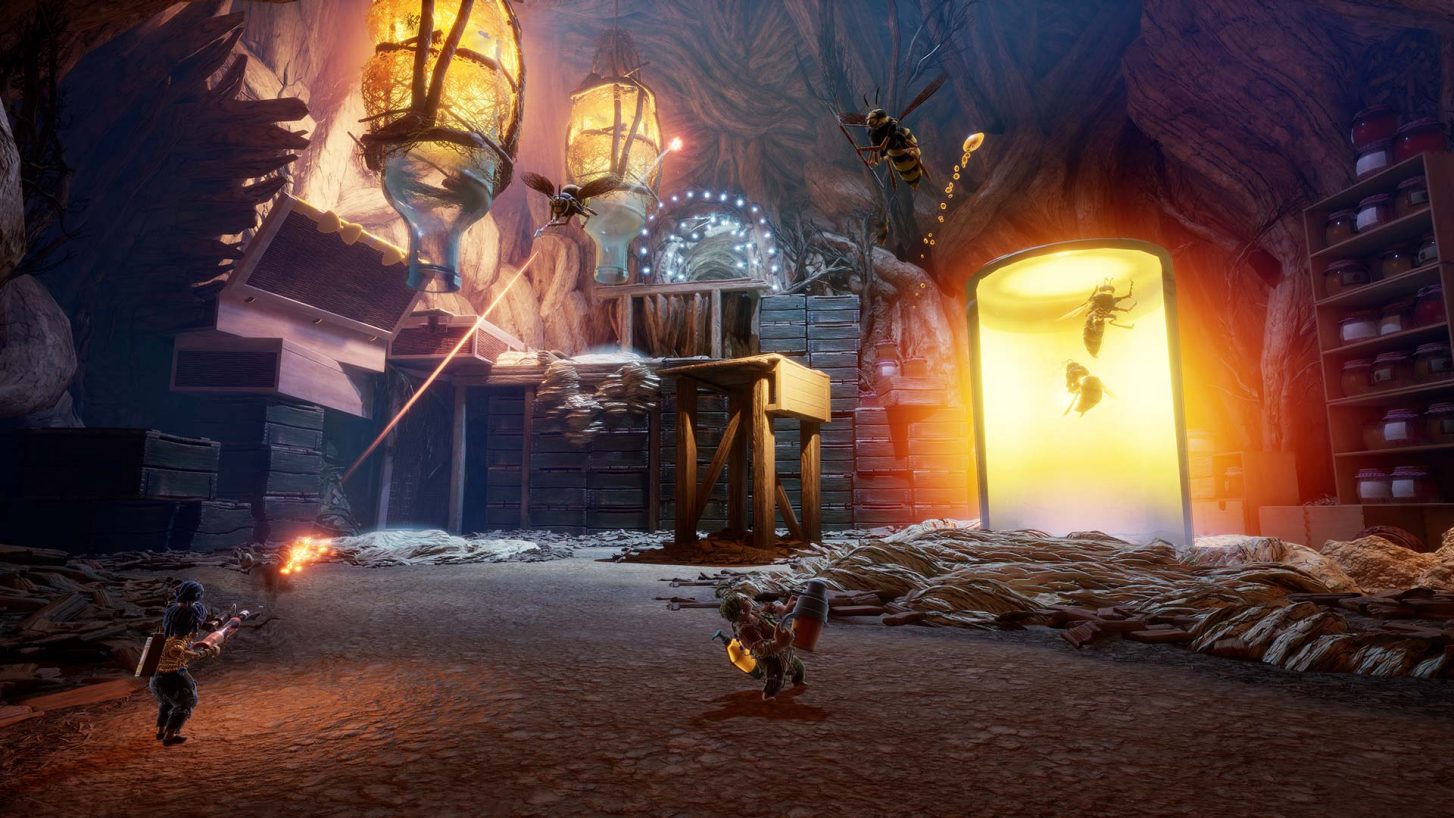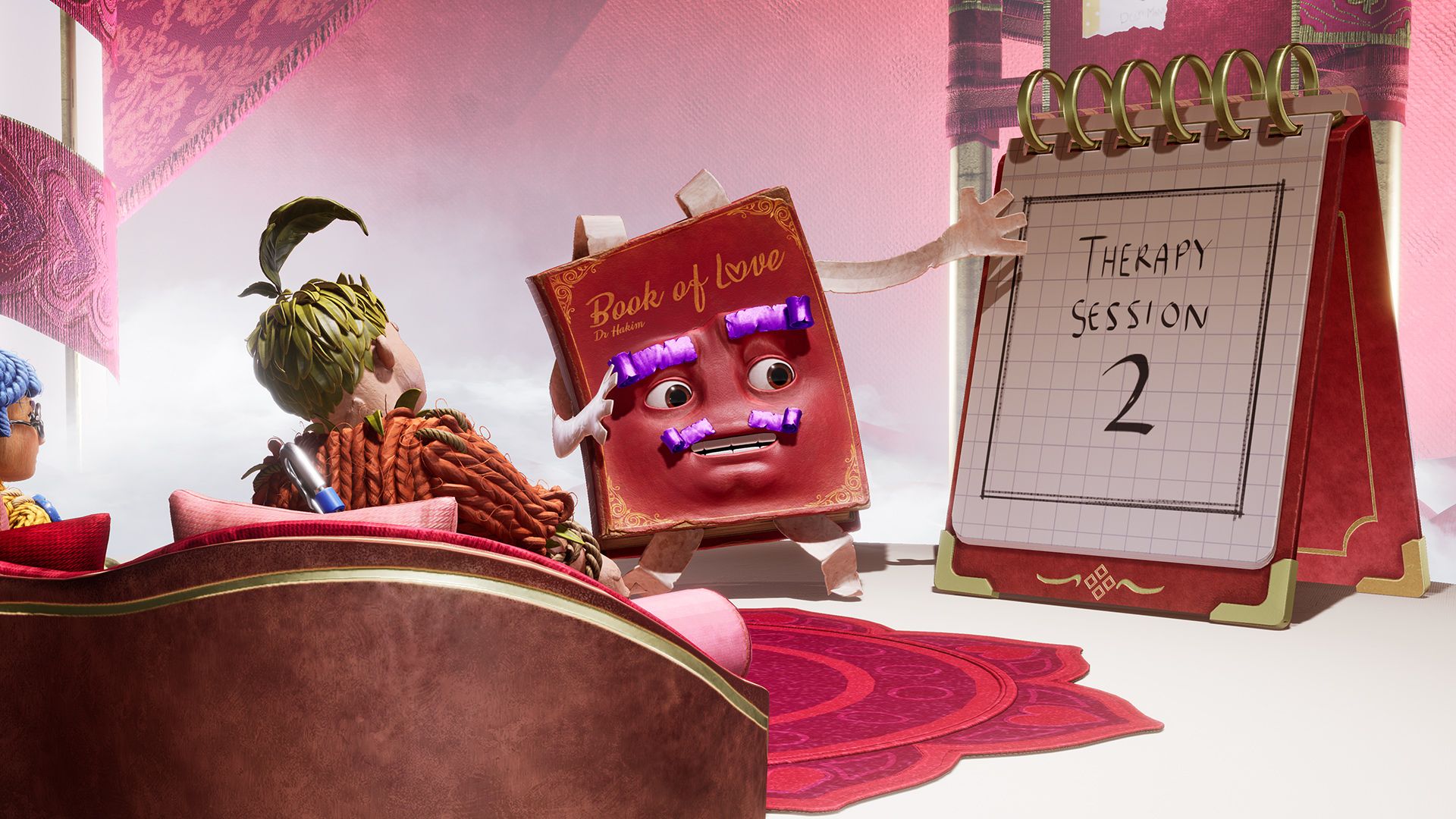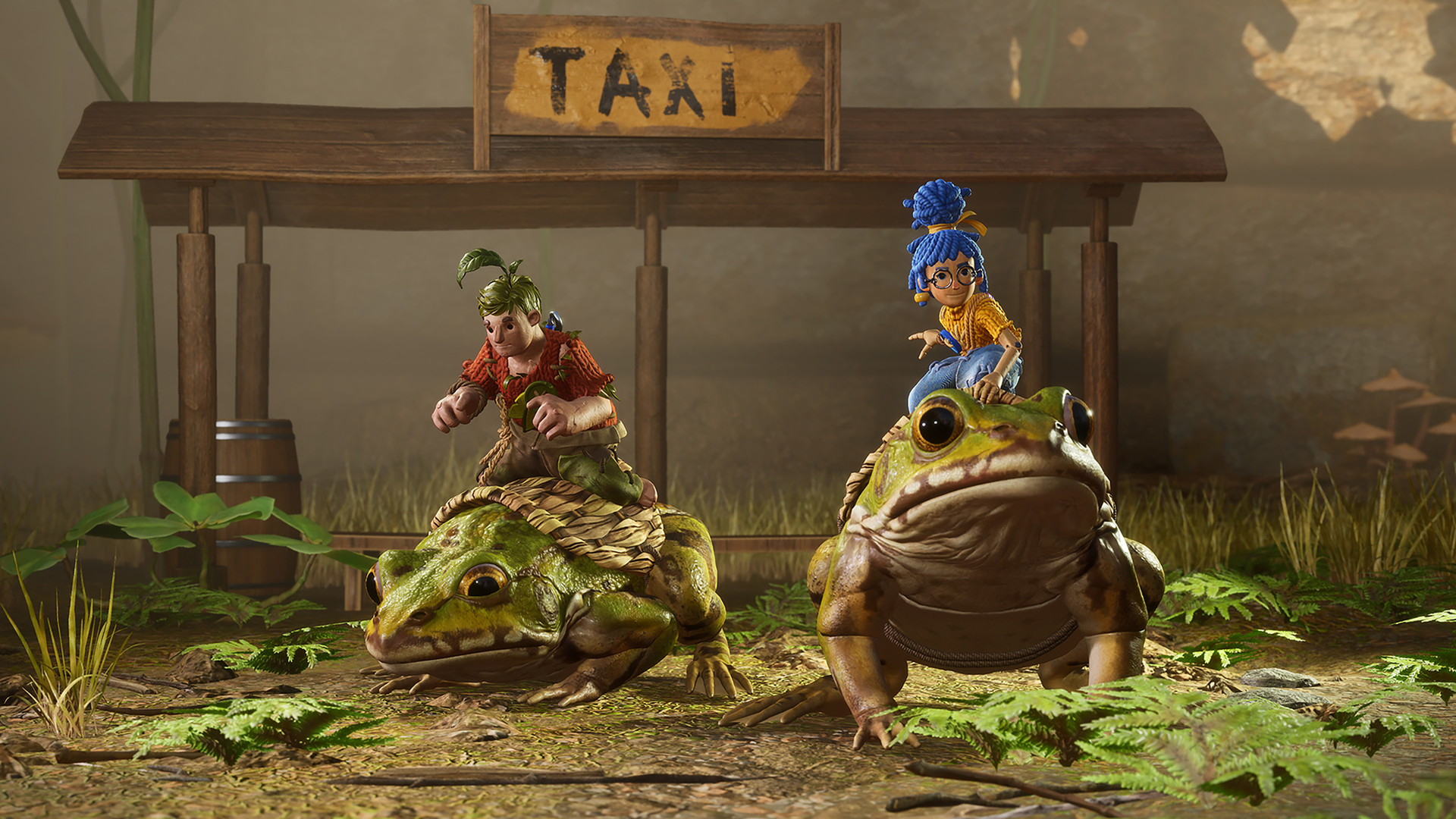
Description
It Takes Two is an action-adventure platform game developed by Hazelight Studios and published by Electronic Arts (EA), released for all major gaming platforms in March 2021. It can only be played in cooperative (co-op) multiplayer between two players in either local or online split-screen.
The game follows Cody and May, a married couple on the verge of divorce. They have been transformed into dolls that resemble them, and throughout the game, are required to work together to solve numerous puzzles and obstacles in the hopes of reawakening in their real bodies.
Official page for It Takes Two
Steam store page for It Takes Two
Analysis
This blog post aims to analyse It Takes Two using the following lenses as defined in The Art of Game Design: A Book of Lenses written by Jesse Schell:
- The Elemental Tetrad
- Endogenous Value
- Problem Solving
- Unification
- Friendship
The Lens of The Elemental Tetrad
The elemental tetrad consists of mechanics, story, aesthetics and technology. This blog post argues that It Takes Two utilises all of them well in order to form a cohesive experience for both players. For example, the combination of the games’ undemanding difficulty and its colourful cartoon aesthetic make it very easy for someone who does not play games often to join their significant other in playing this game.
Mechanics
- A unique take on the action-adventure platformer genre, as co-op gameplay is a requirement rather than just an option
- Co-op nature of the game lends itself well to the game’s puzzles; most (if not all) of them are implemented with both players needing to work together to complete them
- Game is set in split-screen almost 100% of the time (when it is not, the camera is set in a way such that both players can be seen) to allow the player to effectively coordinate with their partner in real time
- An amalgamation of multiple game mechanics of sorts: the game has nine chapters, each of which introduces mechanics unique to the chapter itself
- This variance in mechanics with each chapter makes the game feel fresh regardless of how far in the players are
- A whopping twenty-five mini-games designed for the player to play against their co-op partner, adding yet another layer of complexity to the game’s already varied game mechanic system
- Mini-games range from snowball fights to something as traditional as chess

Story
- The story provides a backdrop for the multiple mechanics set by the game in each chapter and gives a reason for their existence
- Corroborates the development team’s intention of connecting gameplay with the narrative, and that “as the story unfolds, the game’s mechanics will change accordingly”
- e.g. In a particular chapter, May complains that Cody has no sense of time and so Cody is given the ability to manipulate time, while May laments that she cannot be in two places at once and so she is given the ability to create a clone of herself
- Overarching plot revolves around the transformed Cody and May as they traverse re-imagined parts of their property
- They are guided by Dr. Hakim, an anthropomorphic form of a relationship therapy book, whose sole aim is to help the couple fix their tumultuous relationship
- Throughout the story, the couple starts to rekindle their relationship, lending to the “feel-good” nature of the game
Aesthetics
- Incredibly colourful and striking visuals
- Each of the nine chapters hosts a completely unique setting, allowing each area to be visually distinct from one another in terms of colour palette, sound design and overall feel

Technology
- It Takes Two was written mostly in AngelScript, which Hazelight implemented into the Unreal Engine through their own plugin
- The game’s performance (at least on PC) was completely smooth, which personally is especially important when trying to hold the attention of not just one, but two players
The Lens of Endogenous Value
- Unlike other games of the family-friendly platformer genre, the only “collectibles” in It Takes Two are its twenty five mini-games, which are scattered throughout the world and have to be discovered by the players in order for them to be playable
- Players are encouraged to find these mini-games, because they serve as a great way to take a break after a stressful puzzle in the level
- While there are no rewards for winning, the player can still undoubtedly derive value from these mini-games from having bested their co-op partner

The Lens of Problem Solving
- It Takes Two is riddled with a plethora of puzzles that serve as obstacles for the players
- For them to be solved, they will require the application of both the player’s own character abilities as well as those of their co-op partner, as each character’s abilities are often complementary to each other’s
- e.g. To combat the enemy wasps in “The Tree” chapter, Cody needs to smear sap onto them with his sap gun, while May has to finish them off with her match gun, capable of detonating sap
- The variance in game mechanics with each chapter allows for an equally wide range of puzzles and challenges

The Lens of Unification
- The theme of It Takes Two revolves around the idea of collaboration
- Reinforced in the game’s mechanics of requiring two players to continuously progress through the story
- Also evident in the story, as the narrative follows the couple of Cody and May, throughout which they realise the importance of working together in order to resolve their marriage woes and rekindle their love for each other

The Lens of Friendship
- The two-player requirement of It Takes Two is probably one of the most striking features of the game
- Allows the player to build a stronger friendship (or relationship) with the person they are playing with, both through competition (mini-games) and cooperation (solving puzzles together to finish the game)
- With this game, the player is able to go through an immersive and unique gaming experience with a partner of their choosing from start to finish

Conclusion
While it is not the first game to feature the two-player requirement — Hazelight Studios has also previously released games like A Way Out (2018) and Brothers: A Tale of Two Sons (2013) — this blog post posits that It Takes Two‘s implementation is the most refined and creative. It is, without a doubt, one of the most innovative games when it comes to mechanics, story, and tying both of them together to form an enjoyable experience for not just one, but two players. The game is simply a must-play with either a family member, friend or significant other.
